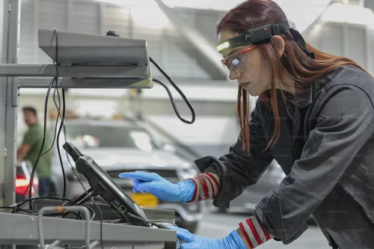
Diamonds have long symbolized enduring love, luxury, and elegance. However, with advancements in technology, the diamond market has seen the emergence of alternatives to traditional natural diamonds. Among these alternatives are lab-grown diamonds and moissanite.
In this article, we’ll delve into the characteristics, differences, and considerations of natural diamonds, lab-grown diamonds, and moissanite to help you make an informed choice.
Natural Diamonds: A Testament to Nature’s Timeless Beauty
Natural diamonds are formed deep within the Earth’s mantle under immense pressure and heat over billions of years. These geological processes create diamonds with unique characteristics and imperfections known as inclusions, which give each natural diamond its distinct identity.
Characteristics of Natural Diamonds
Each natural diamond is unique and one-of-a-kind, with its own individual characteristics, including color, clarity, and inclusions. Natural diamonds are highly valued for their rarity, with factors such as carat weight, cut, color, and clarity influencing their price. Also, natural diamonds are renowned for their hardness, ranking as the hardest natural substance on Earth on the Mohs scale at 10
A Potential Con to Natural Diamonds
Something to note about natural diamonds is that often, there could be some “blood diamonds.”
Blood diamonds, also known as conflict diamonds, are diamonds mined in war-torn countries or mined to finance a country’s war and terrorism. People often are against natural diamonds because there’s a probability of a blood diamond.
Lab-Grown Diamonds: Ethical, Sustainable, and Beautiful
Lab-grown diamonds, also known as synthetic or cultured diamonds, are created in controlled environments that mimic the natural diamond-growing process.
Sometimes, people misunderstand and say that a lab-grown diamond is “fake.” However, lab-grown diamonds are still diamonds. They have the same chemical composition and physical properties as natural diamonds but are produced in a matter of weeks rather than billions of years.
Characteristics of Lab-Grown Diamonds
Lab-grown diamonds are often perceived as a more ethical and environmentally friendly alternative to mined diamonds, as they require less energy and do not involve mining. This means there is no chance of a blood or conflict diamond.
They are typically more affordable than natural diamonds of comparable quality, making them an attractive option for budget-conscious consumers. Additionally, the controlled environment of lab-grown diamond production allows for greater control over the diamond’s characteristics, resulting in diamonds with fewer inclusions and consistent quality.
Moissanite: Brilliant and Budget-Friendly
Moissanite is a naturally occurring mineral, but the moissanite used in jewelry is typically lab-created. It is renowned for its brilliance, fire, and affordability, making it a popular alternative to both natural and lab-grown diamonds.
Characteristics of Moissanite
Moissanite exhibits exceptional brilliance and fire, often surpassing that of natural diamonds. The “fire” means when light passes through the gem, it looks like a rainbow. Also, moissanite is significantly more affordable than both natural and lab-grown diamonds, making it an attractive option for those on a budget.
While moissanite is not as hard as diamonds, at 9.25 on the Mohs scale, it is still a durable gemstone suitable for everyday wear.
Choosing the Right Diamond for You
When it comes to choosing between natural diamonds, lab-grown diamonds, and moissanite, there is no one-size-fits-all answer. Your decision may depend on factors such as budget, ethical considerations, and personal preference.
If you value tradition, rarity, and the allure of natural beauty, a natural diamond may be your perfect choice. However, suppose you’re looking for an ethical, sustainable, and cost-effective alternative. In that case, lab-grown diamonds offer the same beauty and quality without the environmental impact or ethical concerns associated with mining. On the other hand, if brilliance, affordability, and versatility are your priorities, moissanite may be the ideal option for your jewelry needs.
Choosing the right diamond for your engagement ring is all up to you.
Photo by Daniele Levis Pelusi on Unsplash
Final Thoughts
Ultimately, whether you choose a natural diamond, lab-grown diamond, or moissanite, what matters most is finding a gemstone that speaks to you and reflects your unique style and values. With each option offering its own set of advantages and characteristics, the choice is yours to make.



